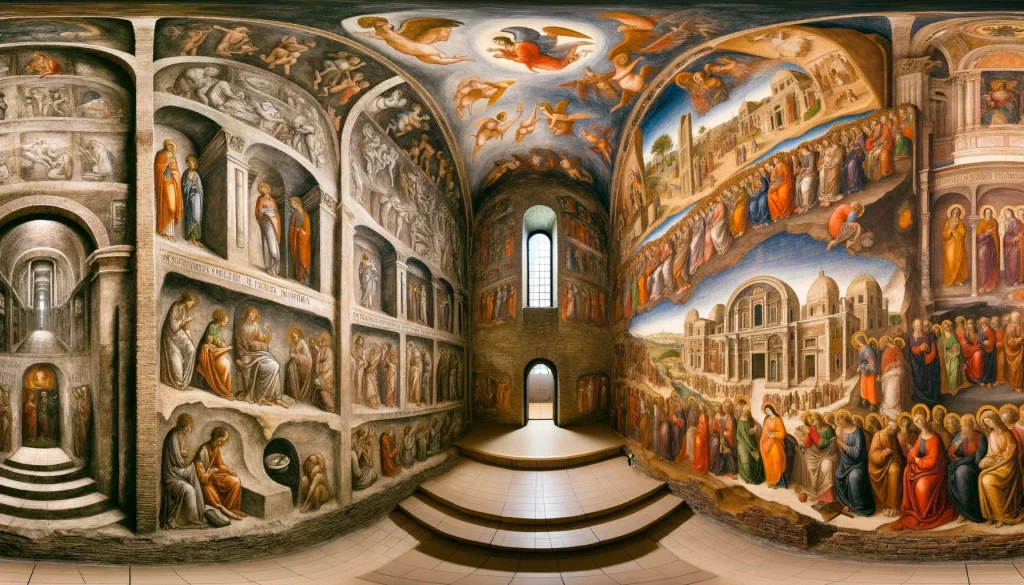Christian art has played a significant role in shaping the values, ethics, and aesthetics of societies throughout history. From the early Christian catacombs to the grandeur of the Renaissance, the visual language of Christian art has conveyed profound spiritual messages while leaving an indelible mark on human culture. In this article, we will delve into the profound impact of Christian art on society and how reproductions of iconic paintings continue to inspire and enrich our cultural heritage.
The Power of Reproductions
Reproductions of Christian art have made it possible for people from all walks of life to connect with and appreciate the beauty and meaning of these timeless masterpieces. The availability of high-quality reproductions has allowed individuals to bring a piece of Christian art into their homes or institutions, fostering a deeper connection to the faith and its cultural significance.
One notable source for obtaining reproductions of Christian artworks is 1st Art Gallery. They offer a wide range of beautifully crafted reproductions, allowing art enthusiasts and the faithful alike to experience the profound impact of Christian art firsthand. These reproductions serve as a bridge between the past and the present, preserving the legacy of Christian art for future generations.
The Early Christian Period: Symbolism and Perseverance
Christian art’s impact on society can be traced back to the early Christian period when followers of the faith faced persecution. The catacombs of Rome bear witness to some of the earliest Christian art, where intricate frescoes and symbols conveyed messages of hope, faith, and eternal life. These artworks not only provided solace to the persecuted but also communicated the core tenets of Christianity to a wider audience.
Through depictions of biblical stories, such as the Good Shepherd or the story of Jonah and the whale, early Christian art conveyed messages of salvation, divine protection, and the importance of perseverance in the face of adversity. These themes not only resonated with the Christian community but also influenced broader societal values of resilience and faith in times of hardship.
The Renaissance: Beauty and Devotion
The Renaissance period witnessed a profound transformation in Christian art. Artists like Leonardo da Vinci, Michelangelo, and Raphael created some of the most iconic religious artworks in history. These masterpieces, such as da Vinci’s “The Last Supper” and Michelangelo’s “The Creation of Adam,” continue to captivate audiences with their beauty and devotion.
During the Renaissance, Christian art played a crucial role in shaping the aesthetics of the era. The pursuit of beauty, balance, and harmony in art reflected a broader cultural shift towards humanism and a reevaluation of the relationship between humanity and divinity. Art of this period emphasized the divine beauty of creation, reinforcing the idea that the pursuit of artistic and intellectual excellence could be a form of devotion.
Moral and Ethical Guidance: The Role of Christian Art
Christian art has also played a role in shaping societal ethics and morality. Religious paintings often depicted scenes of virtue, vice, and the consequences of one’s actions, serving as moral lessons for the viewers. For example, Caravaggio’s “The Calling of Saint Matthew” portrays a moment of conversion and divine grace, emphasizing the importance of repentance and redemption.
These moral and ethical lessons embedded in art have had a lasting impact on societal values. They have helped shape concepts of right and wrong, justice and mercy, and the importance of compassion and forgiveness. Even in secular contexts, these values continue to influence the way society perceives and addresses issues of ethics and morality.
Aesthetic Evolution and Cultural Significance
The evolution of Christian art over the centuries has paralleled changes in societal aesthetics. From the elaborate and ornate Gothic cathedrals to the simplicity and grandeur of Renaissance paintings, the visual language of art has mirrored shifts in artistic styles and cultural preferences.
Christian art has enriched the cultural heritage of societies worldwide by providing a visual representation of faith, spirituality, and the human experience. Its impact extends beyond the boundaries of Christianity, as it has influenced and inspired artists, writers, and thinkers from various backgrounds.
In conclusion, the impact of Christian art on society is profound and enduring. It has influenced values, ethics, and aesthetics over centuries, conveying spiritual messages, fostering moral and ethical guidance, and shaping the way we perceive beauty and divinity. Through reproductions of these iconic paintings, the legacy of art continues to inspire and enrich our cultural heritage, allowing people to connect with the profound messages and beauty of these masterpieces across time and space.

